

The Curio Challenge — Redesign Challenge. So I proposed something I titled then, “Curio-ed Convos” because at the time I was reading Brian Grazer’s A Curious Mind: The Secret to a Bigger Life (a book I picked up because I was curious).
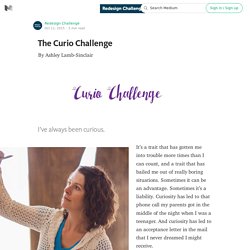
I didn’t really even understand the idea at that time, I just knew I had a vision. I envisioned a way for teachers to systematize what they already did naturally to become better teachers, to follow their own curiosity to discover, share, and collaborate on new ideas. In 2015, this process is often a combination of the virtual and the personal. Most teachers I know Google first, talk about what they find, and create materials after synthesizing the ideas of others with their own original ideas.
Why couldn’t video PD just embrace what I instinctively knew teachers already did? The Flipped Classroom: Pro and Con. In 2012, I attended the ISTE conference in San Diego, CA.
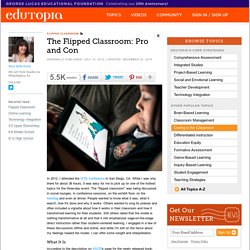
While I was only there for about 36 hours, it was easy for me to pick up on one of the hottest topics for the three-day event. The "flipped classroom" was being discussed in social lounges, in conference sessions, on the exhibit floor, on the hashtag and even at dinner. People wanted to know what it was, what it wasn't, how it's done and why it works. Others wanted to sing its praises and often included a vignette about how it works in their classroom and how it transformed learning for their students. Still others railed that the model is nothing transformative at all and that it still emphasizes sage-on-the-stage direct instruction rather than student-centered learning. 9 Productivity Tips from People Who Write About Productivity. In recent years, work has become infinitely more complex.
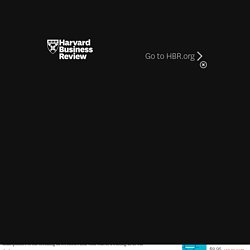
Technological innovations have led to round-the-clock work schedules and mounting expectations. Our assignments have grown more collaborative, requiring more coordination, conference calls, and meetings. We now face an endless barrage of distractions, from the vibrations and alerts on our smartphones to the breaking news stories and viral videos awaiting us at our desks. Now, more than ever, we need strategies for being productive. But where do we start? Earlier this year, as part of an online summit taking place in January 2016, I invited 26 bestselling science and productivity writers to share their insights for achieving top performance. 1. Why the Flipped Classroom Now? The Flipped Classroom: Pro and Con. Flipping my classroom (2) Flipped classroom infos.
Think Before You Flip Your Classroom This Year. For a while now I've been saying something provocative about Flipped Learning.

"It's the worst idea in the history of teaching. " I own that. I've said it. I say it that way to get educators attention. Because I like to have a conversation about it. First a little knowledge leveling. The ‘flipped classroom’ is professional suicide. By Jonathan Rees on August 23rd, 2015 Historian Rachel Hope Cleaves recently identified a recurring meme in the history of food advertising: pigs slaughtering themselves.
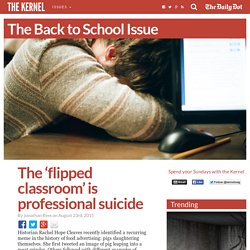
She first tweeted an image of pig leaping into a meat grinder. Others followed with different examples of suicide, some not requiring machines. Over and again, our porcine friends happily sacrifice themselves for our gustatory delectation. Four Assessment Strategies for the Flipped Learning Environment. Flipped learning environments offer unique opportunities for student learning, as well as some unique challenges.

By moving direct instruction from the class group space to the individual students’ learning spaces, time and space are freed up for the class as a learning community to explore the most difficult concepts of the course. Likewise, because students are individually responsible for learning the basics of new material, they gain regular experience with employing self-regulated learning strategies they would not have in an unflipped environment. But because initial engagement with new material is done independently as a preparation for class time rather than as its focus, many things could go wrong. The flipped classroom: six myths. What is the flipped classroom?
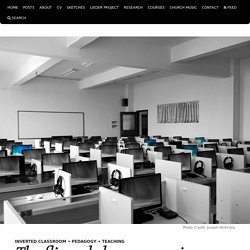
According to many in the educational technology business, it’s using online video to deliver lectures to students and personalize the learning process. However, if you read the work of education researchers, the flipped class model is more about promoting active learning in class, in pursuit of higher-level, critical thinking skills. So which is it? I’d rather not get into the business of erecting fences and proclaiming who is in and who is out. However, it is important to correct misinformation and expose marketing claims masquerading as pedagogical philosophy, so that thoughtful teachers can make wise choices as we plan for the upcoming academic year. Flip Your Classroom with These Teacher-tested Tools.
<data:blog.pageTitle/> Posted June 24, 2015 by Nick LaFave under Flipped Classroom & Blended Learning Resources, Links, and Tutorials from my presentations atUpstate Technology Conference & SC Education and Business Summit 2015 Off the Shelf Video Tools.
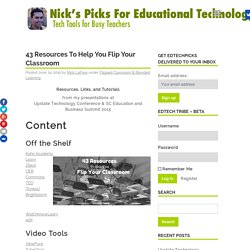
Flipped_learning. "The flipped classroom is a pedagogical model in which the typical lecture and homework elements are reversed” Educause, 2012 Flipped learning has gained momentum initially from within the schools sector, but is now gaining pace as a teaching and learning concept within HE and FE.
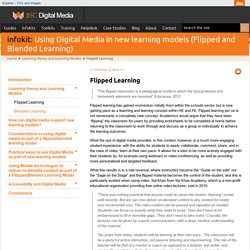
Flipped learning per se is not necessarily a completely new concept. Academics would argue that they have been “flipping” the classroom for years by providing worksheets to be completed at home before returning to the classroom to work through and discuss as a group or individually to achieve the learning outcomes. What the use of digital media provides, in this context, however, is a much more engaging student experience, with the ability for students to easily collaborate, comment, share, and in the case of video, learn at their own pace. Flipped classroom: A culture change. Over a cup of tea and a biscuit one day in 2012, I had a pedagogical epiphany.
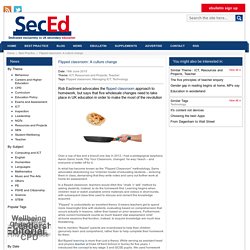
Aaron Sams’ book, Flip Your Classroom, changed he way I teach – and everyone is better off for it. In what has become known as the “Flipped Classroom” methodology, Sams advocated abandoning our Victorian model of educating students – lecturing them in class, demanding that they write notes and carry out further work at home for assessment. In a flipped classroom, teachers would ditch this “chalk ‘n’ talk” method by asking students, instead, to do the homework first. Learning begins when children read or watch available online materials and videos in short bursts, with subsequent class time used to discuss and cement the knowledge acquired. “Flipped” is undoubtedly an excellent theory. The Flipped Classroom FAQ. Back in 2012, I wrote a few posts for the CIRTL Network on teaching with technology. Some of the technologies mentioned have changed since then, but the teaching and learning ideas are still sound, so I’m re-posting them here on the blog this week.
Let me know if you find the posts useful! The Teacher's Guide To Flipped Classrooms. Since Jonathan Bergman and Aaron Sams first experimented with the idea in their Colorado classrooms in 2004, flipped learning has exploded onto the larger educational scene. It’s been one of the hottest topics in education for several years running and doesn’t seem to be losing steam. Basically, it all started when Bergman and Sams first came across a technology that makes it easy to record videos. They had a lot of students that regularly missed class and saw an opportunity to make sure that missing class didn’t mean missing out on the lessons. Flipped classroom infos. Flipped classroom infos. Research: Active Learning More Important than Flipping the Classroom.
Research. Research: Active Learning More Important than Flipping the Classroom. Flipped Classroom Edtech Resources. A Collection of Video Lesson Customization Tools. Image courtesy of Mikel Agirregabiria via Flickr Flipping Classrooms is an increasingly popular teaching practice that involves teachers providing students with a video lesson to watch at home, then going over the learning material through an activity the next day in the classroom. The advantage of having students watch the lecture at home so that teachers have more time in the classroom to help students with activities and provide them with personal one-on-one help. I first learned about flipped classrooms late in 2011 through the blog postings of Aaron Sams and Jonathan Bergmann. They were both science teachers who had their students watch lessons at home and then work on hands-on science activities the next day. 5 Ways Google Tools Can Make Education More Exciting. Google’s no stranger to the education space.
Teachers have been benefiting from the tools they create for years. Every time Google adds a new product or tool to their offerings, teachers get to work figuring out creative ways their students can benefit from it. Whether or not you’ve been using Google tools in your classroom for years or are just now starting to consider their potential, a little inspiration never hurts. If you want to break outside of some of the obvious uses and give your students something fun and exciting to work on with Google, one of these ideas could do the trick. Google Classroom: Student Quick-Sheet Guide. To Flip or Not to Flip Your Classroom. To Flip or Not to Flip: The Only Question Should Be When! A Great Overview of The Flipped Classroom. S Guide to the Flipped Classroom for 2014. Blended-classrooms - The Flipped Classroom. Flipped Classrooms: Annotated list of resources -e-Literate. I was recently asked by a colleague if I knew of a useful article or two on flipped classrooms – what they are, what they aren’t, and when did they start.
I was not looking for any simple advocacy or rejection posts, but explainers that can allow other people to understand the subject and make up their own mind on the value of flipping. While I had a few in mind, I put out a bleg on Google+ and got some great responses from Laura Gibbs, George Station, and Bryan Alexander. Once mentioned, Robert Talbert and Michelle Pacansky-Brock jumped into the conversation with additional material. It seemed like a useful exercise to compile the results and share a list here at e-Literate. This list is not meant to be comprehensive, but a top level of the articles that I have found useful.